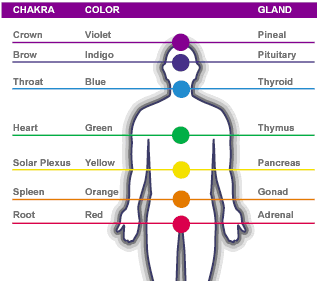Colors have been an integral part of our society for thousands of years; different civilizations have used colors as a mark of their identities.
Although color psychology is a relatively new area of scientific research, ancient civilizations believed in the influence of color on humans. The ancient Chinese, Egyptians, and Indians believed in chromotherapy, or healing with colors.
Color psychology is viewed dubiously by mainstream psychologists and therefore qualifies as “alternative medicine“. Critics view it as an overstatement of what can be justified by research, and point out that different cultures have completely different interpretations of color.
Practitioners of color psychology, sometimes called color consultants, claim there are a number of reactions to color which seem to be noted in most persons. They also note that common physiological effects often accompany the psychological effects.
Religions have been focusing on colors for many centuries now; we can well point the use of saffron color in HINDUSIM and SIKHISM. Green as color is extensively used in ISLAM and even some countries have green flag. Red has become a symbol of Communism or socialism or associated with labour movements. White for one is associated with peace and meditation.
Scientific researchers have been trying to find in-depth secrets of colors in modern age using technology and there has been various success stories and the growing fascination it seems to be coming from big corporate houses in order to impress their customers and widespread their reach.
The biggest use of color psychology is done on traffic signals where RED, ORANGE and GREEN are used to inform drivers about the state of traffic and their present position in the traffic, it is the biggest exercise in the world where no word is used for communication yet management is performed efficiently.
Researchers have found exposure to blue light can increase confidence and boost happiness levels, research suggests. A group of volunteers were exposed to a range of colors and lights. They found that blue and green made male subjects feel happier, while blue, purple and orange did the same for women.
Color, without our realizing it, can have a profound effect on how we feel both mentally and physically. Dr. Morton Walker, in his book The Power of Color, suggested that the ancient Egyptians as well as the Native American Indians used color and colored light to heal. Below are some emotional associations that humans tend to have with certain colors. These are important to keep in mind in order to create the mood you are seeking.
Positives: Passion, strength, energy, love, sex, excitement, speed, heat, leadership, masculinity
Negatives: Danger, fire, blood, war, anger, revolution, radicalism, aggression, stop
Positives : Seas, skies, stability, peace, unity, harmony, tranquility, calmness, coolness, confidence, water, ice, loyalty, conservatism, dependability, cleanliness, technology, winter
Negatives: Depression, coldness, obscenity, conservatism, technology, ice, winter
Positives: Nature, spring, fertility, youth, environment, wealth, money, good luck, vigor, generosity, go, grass
Negatives: Inexperience, envy, misfortune, jealousy, money, illness, greed
Positives: Sunlight, joy, happiness, optimism, idealism, wealth (gold), summer, hope
Negatives: Cowardice, illness (quarantine), hazards, dishonesty, avarice
Positives: Elegance, sensuality, spirituality, creativity , wealth, royalty, nobility, ceremony, mystery, wisdom, enlightenment
Negatives: Cruelty, arrogance, mourning, profanity, exaggeration, confusion
Positives: Energy, balance, heat, enthusiasm, flamboyance, playfulness
Negatives: Warning, danger, fire
Positives: Reverence, purity, snow, peace, innocence, cleanliness, simplicity, security, humility, marriage, sterility, winter
Negatives: Coldness, sterility, clinical, surrender, cowardice, fearfulness, winter
Positives: Power, sophistication, formality, elegance, wealth, mystery, style
Negatives: Evil, death, fear, anonymity, anger, sadness, remorse, mourning, unhappiness, mystery
















3 Trackbacks / Pingbacks for this entry:
[…] Another thing I find interesting is how many women (33%) agree that orange is their least favorite color. Orange is definitely my least favorite color. I had no idea so many other women felt the same way. Brown, yellow and gray also rank as colors women don’t really like. I would have to concur with all of those. If you would like to learn more about colors and how they affect people from a branding perspective, you might want to check out Richard’s article The Ultimate Visual Color Theory Guide Behind Brand Design. I also found another fascinating article about colors at Colors and Psychology. […]
[…] Another thing I find interesting is how many women (33%) agree that orange is their least favorite color. Orange is definitely my least favorite color. I had no idea so many other women felt the same way. Brown, yellow and gray also rank as colors women don’t really like. I would have to concur with all of those. If you would like to learn more about colors and how they affect people from a branding perspective, you might want to check out Richard’s article The Ultimate Visual Color Theory Guide Behind Brand Design. I also found another fascinating article about colors at Colors and Psychology. […]
[…] → Click Here ← […]